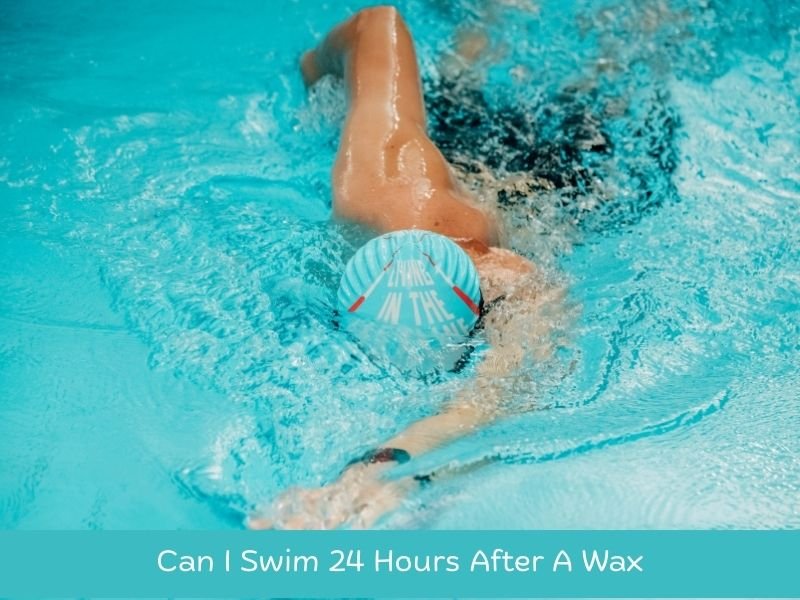When considering the question, Can I swim 24 hours after a wax, it’s essential to understand both the physiological and hygienic implications of post-waxing care. Waxing, whether it’s bikini, leg, or full body, leaves the skin vulnerable. This temporary sensitivity raises concerns, especially when it comes to activities like swimming that expose the skin to various irritants, bacteria, and friction. For anyone who values skin health and seeks smooth, irritation-free results after a waxing session, answering the question—Can I swim 24 hours after a wax—is more than just curiosity. It’s about ensuring comfort, safety, and skin care excellence.
Understanding the Waxing Process and Skin Reaction
Waxing involves the removal of hair directly from the root, which means the top layer of skin is subjected to significant pulling. This often results in redness, irritation, and microscopic abrasions. These tiny skin tears may not be visible to the naked eye but can become potential entry points for bacteria. This is why people often ask, Can I swim 24 hours after a wax? The skin, after waxing, is in a compromised state, and activities like swimming can either promote healing or cause further irritation, depending on timing and precaution.
While waxing leaves your skin feeling smooth, it also removes the natural protective barrier. It is precisely this stripped barrier that becomes a concern. The pores are open, and the skin is tender. So, can I swim 24 hours after a wax without risking infection or irritation? To determine this, it’s crucial to examine the risks of swimming immediately after waxing.
What Happens to the Skin During the First 24 Hours Post-Wax?
Immediately after waxing, the skin undergoes a cycle of healing. The area may appear red, bumpy, or even slightly swollen. This reaction is a natural response to the hair being pulled from its root and the top layer of skin being disturbed. Therefore, when asking Can I swim 24 hours after a wax, consider how your body is still trying to recover during this period.
This healing phase involves the regeneration of the skin’s natural barrier. Open pores gradually begin to close, inflammation decreases, and the risk of infection diminishes with proper care. Swimming during this vulnerable phase introduces multiple elements—bacteria, chemicals, friction—that can disrupt the healing process. Therefore, pausing for 24 to 48 hours before swimming is more than just precautionary—it’s part of responsible skincare.
Expert Recommendations for Post-Waxing Swimming
When professionals are asked, Can I swim 24 hours after a wax, their responses are often cautious. Most licensed estheticians recommend waiting at least 24 to 48 hours before swimming, depending on the sensitivity of your skin and the type of waxing performed. This recovery window gives your skin time to close the pores, reduce redness, and regain its natural protective barrier.
If you’re planning a vacation or a poolside event, it’s important to schedule your waxing session in advance. The desire to look smooth and flawless often leads people to ask, Can I swim 24 hours after a wax, but scheduling smartly ensures you won’t have to risk skin irritation just to enjoy water-based activities. For best results, most experts suggest planning your wax at least 2-3 days ahead of your swimming plans.
Risks of Swimming Too Soon After Waxing
If you’ve recently had a waxing appointment, especially in sensitive areas like the bikini line or underarms, you may wonder, Can I swim 24 hours after a wax without complications? The short answer is: not always. Swimming too soon can expose your freshly waxed skin to several risks. Chlorinated pools, for instance, can severely irritate open pores and lead to rashes or a burning sensation. On the other hand, saltwater may seem natural and healing, but it can also sting and dry out the skin.
Lakes, oceans, and public pools can contain bacteria, and entering them with vulnerable, freshly waxed skin might increase your chances of infection. The question—Can I swim 24 hours after a wax—is especially important if you have sensitive skin or a history of post-waxing breakouts. Giving your skin time to calm down is vital to avoid issues like folliculitis, which is a bacterial infection of the hair follicles. This condition can cause small red bumps and discomfort, undoing the beauty benefits of your waxing treatment.
Tips to Minimize Risk If You Must Swim After Waxing
Even though the ideal answer to Can I swim 24 hours after a wax is “preferably not,” there are precautions you can take if swimming is unavoidable. Begin by applying a protective barrier such as a non-comedogenic, fragrance-free moisturizer. This can help reduce direct exposure to chlorine or salt.
Wearing loose-fitting swimwear made from soft, breathable materials can also reduce friction on freshly waxed areas. After swimming, be sure to rinse off thoroughly with clean water and gently pat the area dry. Avoid scrubbing the skin and apply a soothing, alcohol-free aftercare lotion to restore hydration and support healing. Keeping these tips in mind doesn’t completely eliminate the risk, but they do help manage it when answering the question, Can I swim 24 hours after a wax, under time-sensitive circumstances.
The Science Behind Post-Waxing Care and Water Exposure
Answering the question, Can I swim 24 hours after a wax, involves more than surface-level reasoning. Let’s delve into the science. Water—especially chlorinated pool water—contains chemicals that are known as skin irritants. Chlorine, while necessary for hygiene in public pools, has drying effects and can penetrate freshly waxed skin more easily, leading to redness, peeling, or itchiness. Similarly, ocean water has a high salt content, which can draw moisture from the skin and leave it dry and uncomfortable.
The waxed skin, lacking hair and exposed to potential allergens and contaminants, reacts much more sensitively than usual. Understanding this interaction is key to answering Can I swim 24 hours after a wax confidently? In many cases, waiting an extra day can drastically reduce these adverse reactions and promote a better post-waxing experience.
Effects of Water Temperature on Waxed Skin
Another key consideration when asking, Can I swim 24 hours after a wax, is the temperature of the water. Warm or heated pools, jacuzzis, and hot tubs are popular for relaxation, but they pose additional risks for freshly waxed skin. The heat can exacerbate inflammation, dilate blood vessels, and increase the skin’s sensitivity. Warm water also tends to open pores, which may already be slightly open post-wax, increasing the likelihood of irritation or infection.
Conversely, cold water may feel soothing, especially after a waxing session, but sudden exposure to cold can shock the skin. While it might temporarily reduce redness, cold water doesn’t eliminate the risks associated with bacteria or chlorine. Whether hot or cold, both extremes can interfere with the skin’s healing process if swimming is done within 24 hours post-wax. This further complicates the answer to Can I swim 24 hours after a wax, especially for those engaging in spa activities or temperature-varied pools.
Skin Type and Waxing Sensitivity
Your unique skin type plays a major role in determining whether or not you can swim shortly after waxing. Sensitive skin types are more prone to post-wax complications like redness, rashes, and even ingrown hairs. If you’ve previously experienced irritation after waxing, the answer to Can I swim 24 hours after a wax leans more heavily towards “no.” The risk is simply higher for people with reactive or dry skin.
Those with oilier skin types or skin that naturally resists inflammation may tolerate post-wax conditions better, but that doesn’t completely rule out risk. Even if no visible irritation is present, the microscopic impact on your skin remains. That’s why dermatologists advise taking an individualized approach when determining, Can I swim 24 hours after a wax, based on your skin’s history, resilience, and tolerance levels.
Bikini Waxing and Its Unique Considerations
While waxing legs or arms may pose some risks when it comes to swimming, bikini waxing presents an entirely different set of challenges. The bikini area is much more sensitive, with thinner skin and a higher concentration of nerve endings. This increases both discomfort and susceptibility to infection. When evaluating Can ISwimm 24 Hours After a Wax, it’s vital to distinguish between body areas.
Swimming after a bikini wax, especially in public pools or the ocean, introduces risks such as bacterial vaginosis, urinary tract infections, or localized rashes. Chlorine can upset the pH balance of this intimate area, while saltwater can lead to burning sensations. This decides to swim post-wax far more seriously when the bikini line or intimate areas are involved. Hence, the response to Can I swim 24 hours after a wax is more nuanced and leans towards a clear cautionary “wait longer,” particularly with intimate waxing.
Alternatives to Swimming After Waxing
If you’re wondering what to do if you can’t swim right away, some alternatives allow you to enjoy water-related activities without full immersion. Activities such as sunbathing with SPF, wading up to your knees, or relaxing near the water can be safer choices within the 24-hour window. These reduce the direct contact between freshly waxed areas and the water, mitigating risks.
If you’re still keen on cooling off, you might consider a lukewarm shower instead of a full swim. This lets you enjoy water without submerging the sensitive skin. For those committed to asking, Can I swim 24 hours after a wax, these compromises can help satisfy your need to enjoy the water while still respecting your skin’s healing process.
Natural Remedies to Speed Up Recovery
If swimming within 24 hours is non-negotiable due to travel or events, using natural remedies to accelerate skin recovery could be helpful. Aloe vera is widely known for its soothing and anti-inflammatory properties. Applying pure aloe gel immediately after waxing and continuing for 24 hours can reduce redness and irritation, helping the skin to close pores faster.
Witch hazel, a natural astringent, can also help tighten the skin and reduce the risk of bacterial entry. Chamomile tea compresses and calendula-based creams offer calming effects and may promote healing as well. While these remedies are not a guarantee that swimming will be completely safe, they add a layer of protection. This makes the question, Can I swim 24 hours after a wax, slightly more flexible for those who diligently follow aftercare routines?
Professional vs. At-Home Waxing Considerations
Whether you wax professionally or at home can influence your skin’s reaction and the safety of swimming soon after. Licensed estheticians are trained to minimize trauma to the skin, reduce ingrown hair risks, and apply soothing agents post-treatment. A professionally done wax is often cleaner, faster, and less likely to cause trauma, meaning the skin might recover faster. However, even in this case, when clients ask, Can I swim 24 hours after a wax, most professionals still advise waiting longer.
On the other hand, at-home waxing kits are prone to user error. Uneven pulling, excessive wax residue, and lack of sterilization can leave the skin more inflamed and even partially injured. DIY waxers are particularly discouraged from swimming within the 24-hour window, as their skin may be in a more compromised state. This makes the answer to Can I swim 24 hours after a wax especially clear: not advisable unless you are certain of your technique and aftercare.
Signs Your Skin Is Not Ready for Swimming
Even if 24 hours have passed, it’s important to observe your skin before diving in. Ask yourself: is the area still red, bumpy, or itchy? Does it sting when touched or rubbed lightly? If yes, then the answer to Can I swim 24 hours after a wax should be “not yet.” Look for smooth, non-irritated skin with closed pores and no signs of rash or sensitivity.
Waiting for complete calmness ensures that your body has re-established its natural defenses. Applying a light layer of unscented, non-oily moisturizer can also help you determine skin readiness. If the product causes any tingling or discomfort, the skin is not fully healed and may react negatively to pool or seawater exposure. That’s why self-monitoring is crucial when making the final call on Can I swim 24 hours after a wax.
Psychological and Aesthetic Concerns
While most advice focuses on health and safety, it’s worth noting that many people ask Can I swim 24 hours after a wax for aesthetic reasons. Beach holidays, pool parties, and spa getaways often motivate waxing in the first place. The desire to look and feel confident in swimwear sometimes overrides caution. However, visible rashes, redness, or inflammation can affect self-esteem and defeat the purpose of waxing.
Choosing to delay swimming can not only preserve your skin health but also maintain the smooth, flawless appearance you aim for with waxing. Even from an aesthetic point of view, giving your skin time ensures that any post-wax glow remains unspoiled. Thus, the question Can I swim 24 hours after a wax has implications far beyond skin health—it also affects how you carry yourself confidently in social or public settings.
Conclusion
The recurring question—Can I swim 24 hours after a wax—requires more than a simple yes or no? It depends on a variety of factors, including your skin type, the area of the body waxed, the method used, and the environment you plan to swim in. From the risks associated with chlorine and saltwater to the unique vulnerability of the skin post-waxing, every element plays a role in whether swimming so soon is truly safe.
For most people, professional advice leans toward caution. Although some may experience no visible reaction 24 hours after waxing, the skin is still in recovery mode. Pores remain open, the surface layer is more permeable, and the risk of bacterial infection is heightened. Whether it’s a chlorinated pool, the salty ocean, or even a hot tub, introducing freshly waxed skin to these elements can increase discomfort, redness, breakouts, or more severe reactions.
That said, personalized care makes a difference. If you’ve followed proper aftercare—like moisturizing with fragrance-free products, avoiding tight clothing, and applying calming agents such as aloe vera or witch hazel—your skin may be better prepared. However, visible signs of irritation, sensitivity, or inflammation are your skin’s way of signaling it’s not ready. In those cases, it’s wise to wait at least 48 hours or until full recovery.






